
How One Nutritionist, Chef, and Vegan Gets Enough Protein On A Plant-Based Diet. Here's Her Exclusive Guide.
If you follow a plant-based diet, I’m sure you’ve been asked at least a couple of times “where do you get your protein from?” And I’m pretty sure you’ve looked at them in exasperation while listing every source of plant-based protein under the sun. We all know where to get our protein, but the more important question is: are we getting enough protein?
I’d love to introduce myself before I continue. My name is Namita and I’m both a chef, certified plant-based nutritionist, and vegan of six years. I love diving into the nooks and crannies of what constitutes a good plant-based diet, but my favourite subject to talk about is protein.

What I’ve Learned From My Clients
Over the past year, I’ve helped several clients with different dietary preferences. What I’ve realised is that most people, vegan or not, were not getting enough protein. Let’s be clear, it’s no fault of theirs; the Indian diet is naturally carb-heavy with rice forming the base of many dishes and wheat being the base of many others.
The standard Indian diet also has a reasonable amount of fat sources from various oils/animal fats used in cooking. However, our traditional diet (particularly if you are a vegetarian or vegan) is rather low on protein.
Protein In the Indian Diet
Think about it, our go-to Indian breakfasts idli, dosa and poha are rice-based. What about upma, paratha and bhature? Wheat based. Onto lunches: most households consume rice with an assortment of veggies and pulses for lunch. While this is rich in veggies, the protein content is low. As for dinner, roti with a lentil curry is quite common: again, this is not an unhealthy meal, however it is not balanced when it comes to macros.
What are common vegetarian sources of protein you can think of? Pulses, beans, legumes, and paneer are most found in a vegetarian Indian household. But if you follow a plant- based diet, then paneer is out of the mix. A quick google search will show you that chickpeas have 19g of protein per 100g, and that 100g mung beans have 24g protein.
This is accurate, but there is a nuance we often miss: this is the protein content in when these beans and pulses are in their raw form. 100g of dry chickpeas may have 19g of protein, but 100g of cooked chickpeas has only about 9g of protein.
Same goes for mung beans, 100g of cooked mung beans has only 7g of protein. If you wanted to get 24g of protein from cooked mung beans, you’d need to eat around 350g, which is quite a lot. The standard serving of cooked beans/legumes is around 100-150g and tends to overestimate how much protein we get from these sources. The truth is that beans, legumes, and pulses are great sources of carbohydrates with a relatively high amount of protein. Compared to other sources of protein, it isn’t as comparable.
How To Get Enough Protein On A Vegan Diet
To know if we’re getting enough protein, we first need to figure out how much protein our bodies require. The minimum recommended amount of protein per day is 0.8g of protein per kg of body weight. For eg: if you weigh 75kg, you require a minimum of 60g protein per day.
This quantity increases depending on your activity level. If you’re an athlete, you need as much as 2.2g of protein per kg of body weight. If you’re someone who leads an active lifestyle, about 1.2-1.5g of protein per kg bodyweight is a good amount.
Reliable, Healthy Sources Of Plant-Based Protein

With this information in mind, if you were to calculate your daily protein intake, would you say you are getting enough protein? If not, what can you do? Of course, beans and pulses are not the sole sources of protein for vegans. Tofu, seitan (or mock meat), tempeh, and soy chunks are much better sources of protein.
- Tofu has roughly 10-13g of protein per 100g
- tempeh has 18-20g of protein per 100g
- seitan has 20-25g of protein per 100g
- Soy chunks have 20-25g of protein per 100g
Adding these foods to your diet on a regular basis would make meeting your protein requirements a lot easier. Additionally, something that I personally do and recommend is taking a protein supplement. To be clear, taking a supplement is not a must. You can meet your protein requirements without it.
Vegan Protein Powder Can Help A Lot
However, Protein powders can make meeting your requirements a lot easier, especially if you’re someone who leads a more active lifestyle and hence needs more protein. For eg: if you have an active job (like a chef who is on their feet for most of the day) and works out daily, your protein requirement might be closer to 1.5g protein per kg, i.e., if you’re 75kg, you may need around 110g protein.
Your protein consumption can also be dependent on your fitness goals. If you’re looking to build muscle and prefer weightlifting; you may need more protein than someone who prefers going for a light evening walk. Therefore, it’s important to consider your goals as well as your current lifestyle when determining your protein intake.
If you’re finding it difficult to meet your protein requirement, adding one scoop of protein powder to your daily diet will help you get an additional 20-25g of protein.
If you’re new to protein powder, I would recommend researching well before choosing one. Make sure that it’s a good brand, and that the protein is of good quality. Check what sweetener they use, look at the reviews and opt for one that tastes good. You might find flavours like chocolate or coffee more palatable especially in the beginning.
Go for a smoothie with bananas, plant mylk, protein powder, a dash of sweetener if you feel the need, and ice. Or replace some of the flour in your favourite pancake recipe with protein powder. You can even replace a small portion of the flour in your roti dough with unflavored protein powder. There’s no wrong way to have it!
My Plant-Based Protein Guidelines
1. Add a source of protein with every meal
2. Calculate your daily macros for a few days so you have a better understanding of your
current intake
3. Consume 30g of protein with your breakfast, that way 30-40% of your daily goal is already met in the morning
My hope is that you found this helpful and that this guide can be used to add more protein into your diet.
Feel free to reach out to me at @itschefnamnam on Instagram if you’d like to share your thoughts or ask me questions!



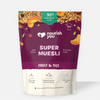
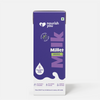
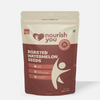
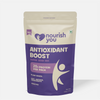
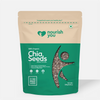
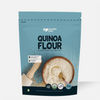
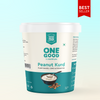
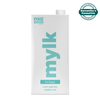
Leave a comment